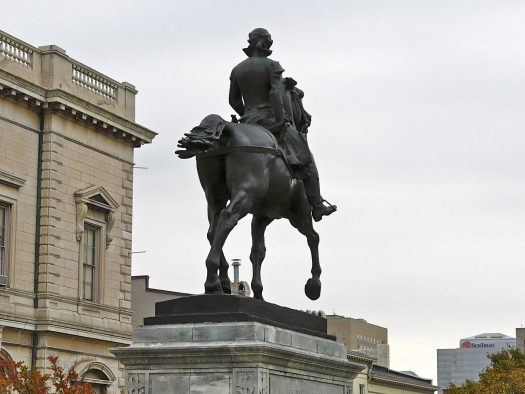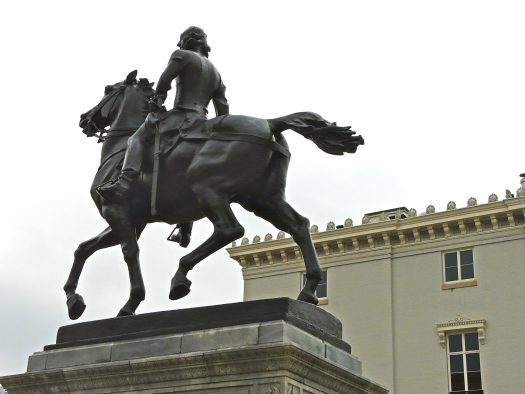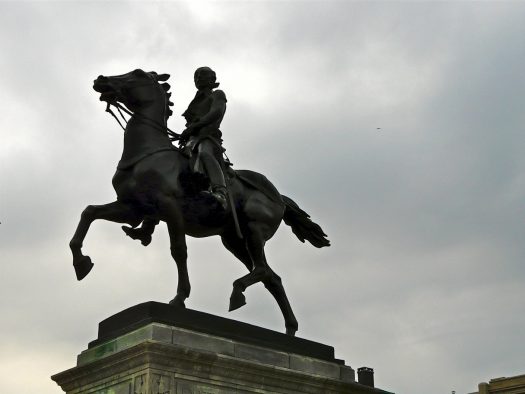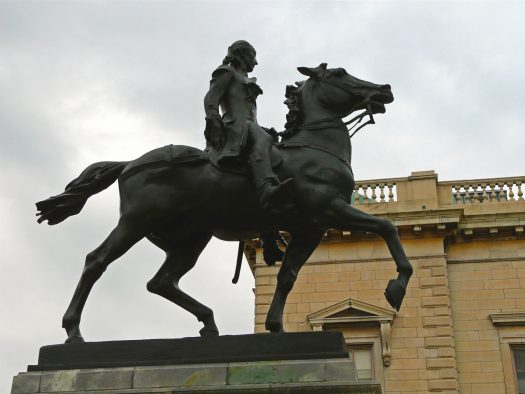- CountryUS
- Town:MD Baltimore
-
Year of creation:1924
- Rider(s):Lafayette
Marquis de la Fayette (or Lafayette) (1757 –1834) was a French military officer, a general in the American Revolutionary War and a leader of the Garde Nationale during the French Revolution.
In the American Revolution, Lafayette served in the Continental Army under George Washington. Wounded during the Battle of Brandywine, he still managed to organize a successful retreat. He served with distinction in the Battle of Rhode Island. In the middle of the war, he returned to France to negotiate an increased French commitment. On his return, he blocked troops led by Cornwallis at Yorktown while the armies of Washington and Jean-Baptiste Donatien de Vimeur, comte de Rochambeau, prepared for battle against the British. In 1788 in France, Lafayette was called to the Assembly of Notables to respond to the fiscal crisis. Lafayette proposed a meeting of the French Estates-General, where representatives from the three traditional classes of French society—the clergy, the nobility and the commoners—met. He served as vice president of the resulting body and presented a draft of the Declaration of the Rights of Man and of the Citizen. Lafayette was appointed commander-in-chief of the French (Garde nationale) National Guard in response to violence leading up to the French Revolution. During the Revolution, Lafayette attempted to maintain order, for which he ultimately was persecuted by the Jacobins. In 1791, as the radical factions in the Revolution grew in power, Lafayette tried to flee to the United States through the Dutch Republic. He was captured by Austrians and served nearly five years in prison.
Lafayette returned to France after Bonaparte freed him from an Austrian prison in 1797. Lafayette became a liberal member of the Chamber of Deputies in 1815, a position he held until death. In 1824, President James Monroe invited Lafayette to the United States as the “nation’s guest”; during the trip, he would visit all of the then twenty-four states. For his contributions to the American Revolution, many cities and monuments throughout the United States bear his name, and he was the first person granted honorary United States citizenship. During France’s July Revolution of 1830 Lafayette declined an offer to become the French dictator; instead he supported Louis-Philippe. Lafayette died on 20 May 1834, and is buried in Picpus Cemetery in Paris, under soil from Revolutionary War battlefield Bunker Hill.”
- Sculptor(s):O'Connor, Andrew
(1874 –1941) was an American/Irish sculptor.














